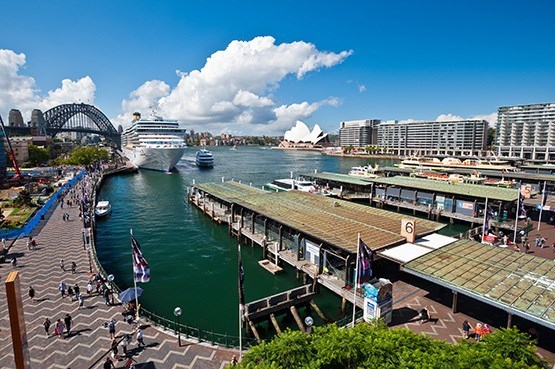Totally Findable Tourist Caches

Welcome to Sydney
This series of geocaches is designed primarily with visitors to Sydney in mind who may have limited time and transport options and want a quick and easy find while out enjoying some sightseeing around this beautiful city.
All cache containers will be one of three types; a flat magnetic key case (MKC), a round film canister (FC or MFC for magnetic) or a fake rock (FR).
The hint will indicate the type of container used and will be very specific to help you find the cache easily. If you want a challenge to find this cache and don't wish to know exactly where it's hidden, do not look at the hint.
At each location you’ll be given some information about the site you are visiting.
Enjoy!
------------------------------
Sydney's First Traffic Lights

Market St and Kent St intersecton today

Proof it was the first!!
On the 13th October, 1933, Sydney's very first set of automatic traffic lights began operating at the nearby intersection of Market St and Kent St. At 11am on that day, the traffic lights were switched on by the then Minister for Transport, Michael Bruxner.

When the first traffic lights were installed explanations on their use appeared in the newspapers. Many drivers however, ignored them.
Melbourne trialled a manual version in 1928, where police on the footpath controlled the signal changeover. Sydney's trial, described as an "electro-matic vehicle actuated controller", proved a great success (the name perhaps less so).

The following is a Sydney Morning Herald report of the event, printed the next day:
TRAFFIC CONTROL
Automatic Device In Use At City Intersection
Sydney’s first experiment with automatic traffic control was begun yesterday, with the inauguration of an “electro-matic vehicle-actuated controller” at the intersection of Kent and Market streets.
The Minister for Transport (Mr Bruxner), the Chief Secretary (Mr. Chaffey) and the Commissioner for Road Transport (Mr. S. A, Maddocks) were present to see the device put into operation.
Four posts, each carrying three sets of three-coloured lights, have been erected at the street corners and broken “stop” lines have been painted in yellow on the roadway. Signal changes are effected through special “detectors” fitted in the road surface. These register the passage, speed and direction of every vehicle passing over them, and the appropriate light signals are shown automatically, being exactly adjusted to the traffic flow at the moment.
Motorists took to the innovation surprisingly quickly and a number of policemen who had been detailed to help educate motorists in the system had little to do. The lights worked automatically and streams of traffic halted or moved on rapidly in compliance to the red and green lights. Between each movement of traffic, the lights were amber indication a breathing-spell for the clearing of traffic from the intersection.

There were occasional incidents which temporarily marred the evenness of the system’s working. An elderly lady, who had several children in the back of her motor car, stopped in the middle of the street and halted traffic for some minutes while the operation of the lights was explained to her.
A number of men, evidently pleased to see that the traffic policeman was missing from his accustomed spot, drove gaily across the intersection in defiance of the red lights.
The Superintendent of Traffic, Superintendent Carter, said that motorists could not be expected to fall in with the system at once, but the results of the first day’s working, was satisfactory. He said that the system was especially applicable to right-angled intersections with even flows of traffic in both streets. He did not believe that traffic policemen would no longer be needed because constables would still be necessary to detect offenders against traffic regulations.
It is claimed that statistics show a considerable diminution of accidents wherever this system has been installed, and that since no continuously moving parts or delicately adjusted mechanisms are used, the installation functions indefinitely without attention or maintenance. The meaning of the signals was explained in yesterday’s “Herald”.
The directors of Automatic Telephones Ltd., suppliers of the apparatus, entertained the Ministers and other guests at Romano’s. A working model of the apparatus was displayed on one of the tables. Mr. Bruxner congratulated the company on its enterprise and confidence in installing the equipment for a test without asking the Government to bind itself to purchase.
It is thought that the equipment will cost ₤1 a week for each street intersection.

If you like traffic lights, click on the traffic light image below for a YouTube link and sing my favourite song!!!!

There's a cache at the traffic light sculpture too!
GC5KDFX Lights Alive
